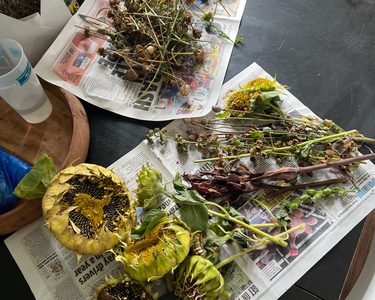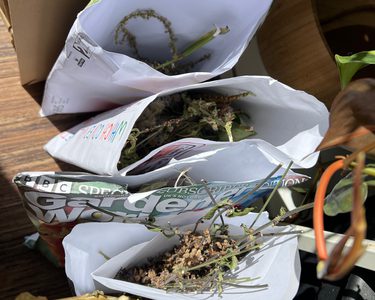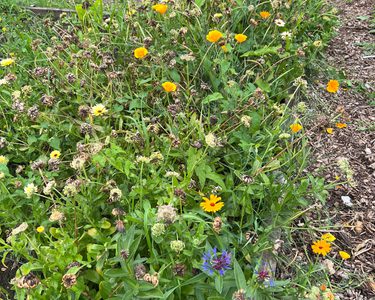Chris Collins on…saving seeds from hardy annuals

Every gardener will be familiar with that sense of change in the garden as the summer comes to a close. The seasons are like old friends: absent for a while only to return to offer fresh thinking. The work in the garden, on the plot and balcony will all require a change in strategy as the weather cools.
One of the big changes that’s already becoming apparent is the tiring of all the seasonal flowers. Gaps open on the allotment, bedding plants exhaust their blooms, and the hard working and aptly named hardy annuals are determined to set their seed for the following spring.
Harvesting for next year’s colour
I’m always grateful to my hardy annual plants. They bring something extra to my plot, providing streaks of bright colour through rows of veg and acting as a haven for pollinators.
It’s for this reason I’m careful to collect next year’s stock by drying and storing the seed from this year’s plants. Calendula is one of my favourites – and one of the easiest. It sets seed profusely, with seeds drying on the plant, and I collect them in envelopes by hand.
I use all sorts for envelopes, including old magazine covers, and these bulging parcels are all labelled and stored in the cool of my shed. Once I’m satisfied, they’re completely dry, they can be transferred to sealed containers and saved for next year.
With hardy annuals such as Love-in-a-Mist, cornflowers, California poppies, godetia and sunflowers, I like to cut a length of stem along with the flowerhead. And I’ll hang this by string in the shed until dry. They’ll also be transferred to a sealed environment, protecting them from being a potential meal (mice love sunflower seeds!) or from fungal infection.
It’s always important to label your seeds, but you may find that any cultivar seeds you’ve bought will revert to their natural form.

Finding a new home
Of course, you don’t have to store your saved seed. Many gardeners like to sow their hardy annuals in the autumn as the cooler temperatures help germination. Opt for a natural drift effect by sowing in small drills, as this always provides a beautiful display.
Many of these flowers are also quite capable of self-seeding. After three years of sowing them on my allotment, they now appear without my assistance with nature quite happily doing the job for me.
